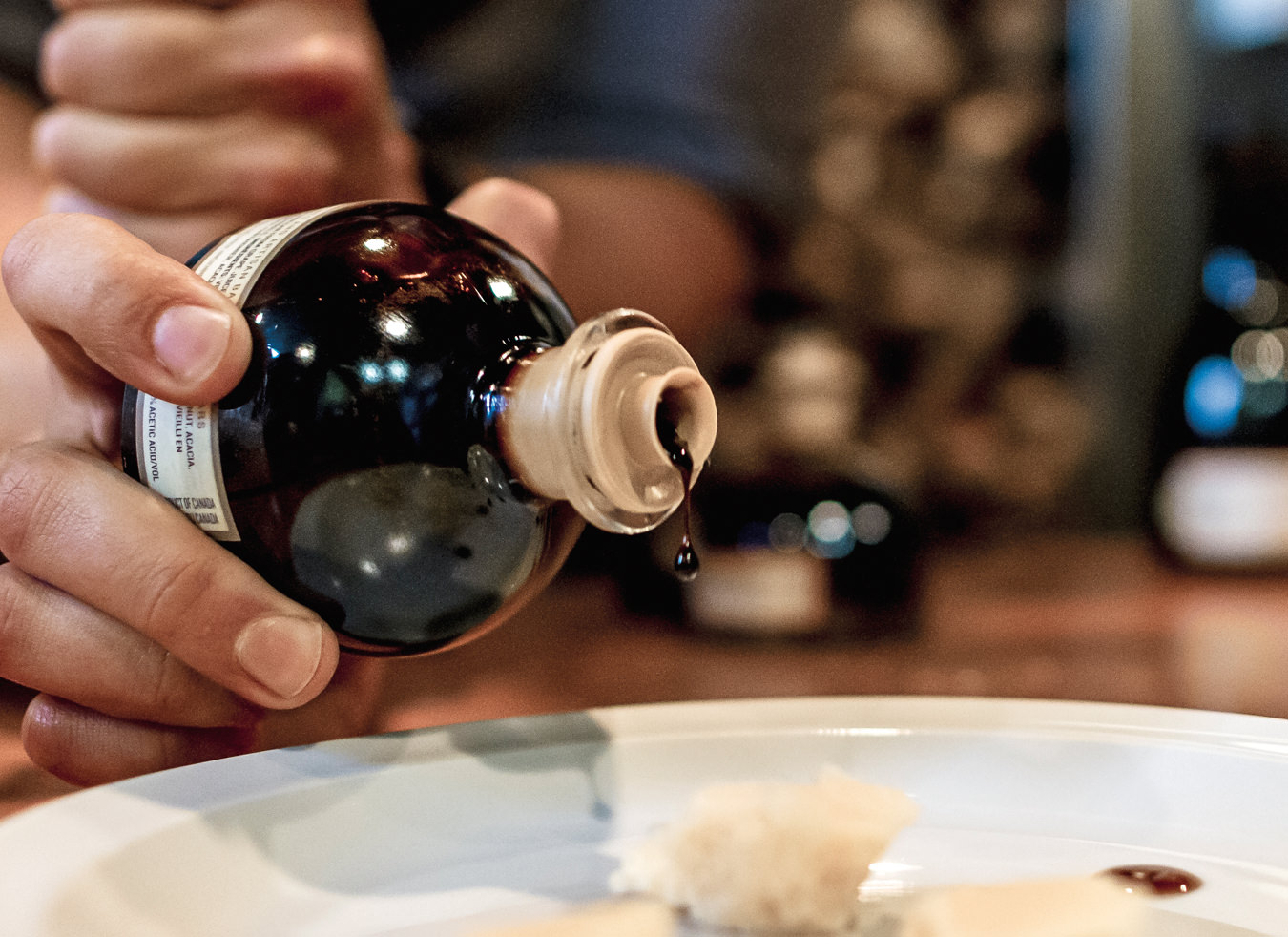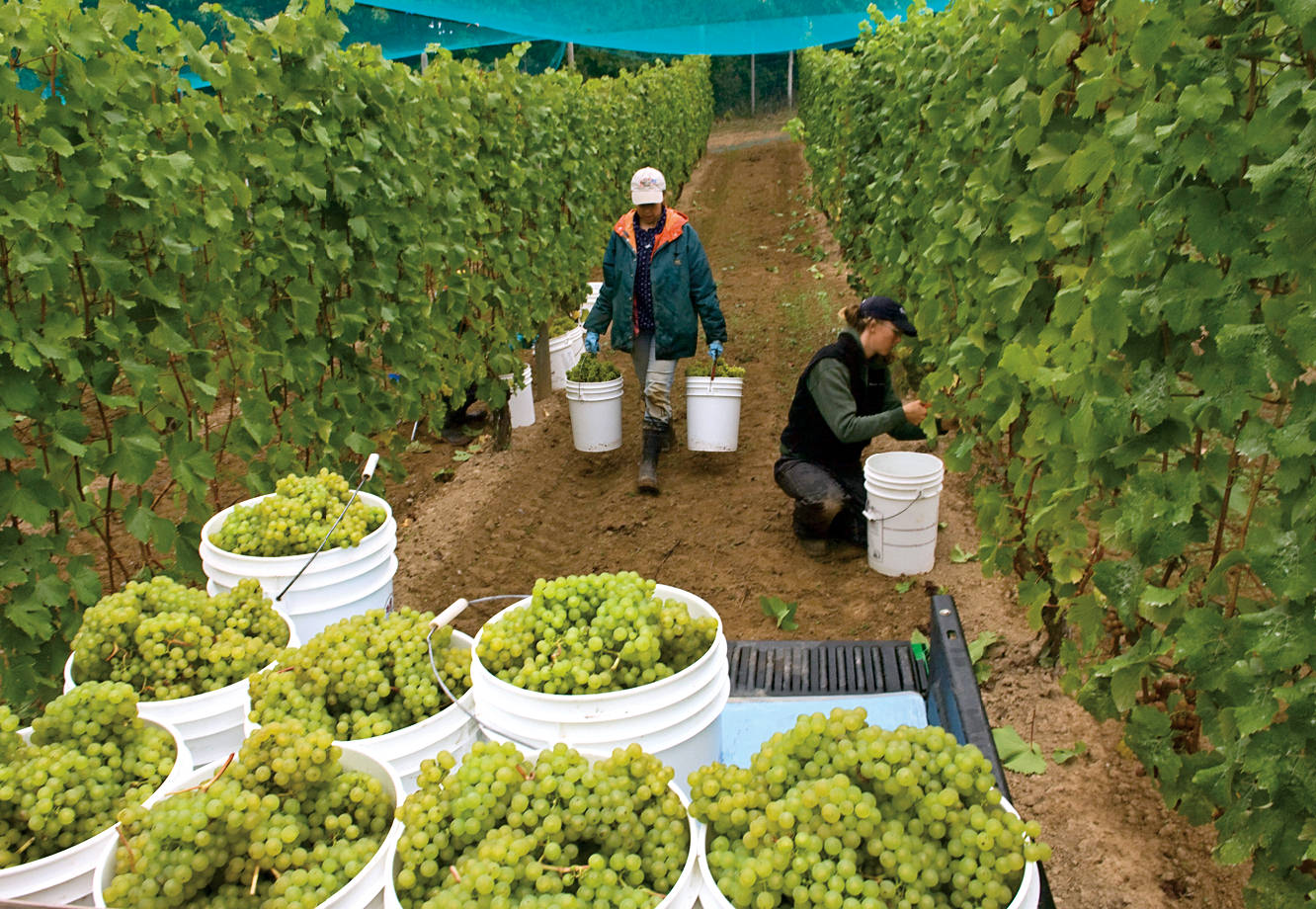To appreciate what makes Venturi-Schulze winery’s balsamic vinegar special, one must appreciate what goes into making true balsamic.
In an alchemical process, grapes are pressed and simmered down on open fires; microbial cultures are introduced; and the whole mixture is gradually moved through a series of barrels, following a solera system similar to what’s used for the production of sherry. By the time balsamic meets bottle, it’s been running through the system for about 12 years. “What I want you to leave with here is how insane the whole process is,” says owner Giordano Venturi, adding he wants people to have an awareness about how long the process is for the vinegar to reach maturity.
It is a mild Vancouver Island day in Venturi-Schulze vinegary, a room filled with numbered casks of varying sizes that are marked “acacia”, “cherry”, and “chestnut”, and with the names of other woods. This is where real balsamic comes from. The stuff labelled “balsamic” in grocery stores mostly consists of red wine vinegar, boiled grape must, and caramel colouring. Venturi remembers his mother storing it in a big bottle beneath the sink. “I kind of like it,” he says. But he’s quick to point out that true, traditional balsamic is a different beast altogether. For one thing, there’s the flavour: concentrated, complex, and explosive. Layer upon layer. More akin to a top-shelf single malt than something you’d put in salad dressing.
Then there’s the secrecy. Complex microbiology, and a bit of alchemy, and the fact that the Italian producers are not anxious at all to share their processes, their production secrets.
Venturi comes from Modena, Italy, one of two Northern Italian regions (the other being Reggio Emilia) allowed to produce aceto balsamico tradizionale (traditional balsamic vinegar). A local regulatory association makes sure the product adheres to strict parameters, both in terms of look and smell. While in Modena, Venturi became familiar with the product, and after immigrating to Canada in the ‘60s, decided to try it himself. He experienced some problems in the beginning, but Venturi was determined. And eventually, he got assistance. “A friend was kind enough to help me,” he says. In 1971, he was able to obtain from Modena a sample of the mother of vinegar, the cellulose membrane that floats on the surface of the liquid, harbouring the organisms that convert alcohol into acetic acid. It looks like a mutant jellyfish floating in brown juice (“I had a difficult time getting it through customs,” says Venturi). Shortly after establishing the Vancouver Island vineyard in 1987, Venturi and his wife, Marilyn Venturi—a microbiologist by training—received a federal research grant. They were able to receive unpublished scientific data on balsamic vinegar, especially from Reggio Emilia, which helped solve their initial production problems.
Today, annual releases of Venturi-Schulze balsamic are in full swing, albeit on a modest scale. The vinegar is as good as liquid gold, and locavore gourmands snatch it up. The time, the alchemy, the secrets, the work: maybe it is insane. But anyone who tastes even a drop seems happy to indulge in the madness.
_________
Still hungry? Read more from our Dining section.











